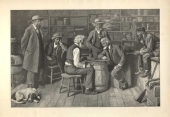The Checker Maven
The World's Most Widely Read Checkers and Draughts Publication
Bob Newell, Editor-in-Chief
Published every Saturday morning in Honolulu, Hawai`i
Noticing missing images? An explanation is here.
4th of July: The Sentinel

Every year we say that we love celebrating America's birthday, the Fourth of July, and this year is no different. At The Checker Maven we're proud to be patriots and with today's problem, we salute everyone who serves our nation, whether past, present, or future.
As we always do on this date, we turn to Tommie Wiswell, master checker problemist, champion player, and World War II veteran. He calls this problem "The Sentinel" and we think that title is an appropriate tribute to those serving us today as sentinels of freedom.
Here's the position.
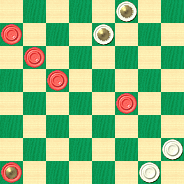
White to Play and Draw
W:W32,28,K7,K3:BK29,19,14,9,5.
The title gives a clue to the solution. Can you work it out, perhaps between hot dogs at the 4th of July picnic? Don't get cole slaw on your checkerboard! When you're ready, click on Read More to reveal the carefully guarded solution.![]()
The People's Journal

We've heard more than enough over the years about the "People's Republic of XXX" and the "Democratic People's Republic of YYY" and all the rest. These countries are seldom a republic and virtually never democratic.
So our latest finds, "The People's Journal" and "The People's Checker Book" might at first sound more than a little suspicious, until we point out that these publications date back to about 1898, long before the first appearance of a "People's Republic" and even before the Bolshevik revolution.
In fact, "The People's Journal" published some interesting checker problems, one of which is presented below.
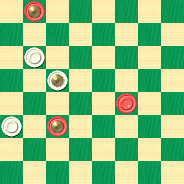
BLACK
Black to Play and Win
B:B14,K11,K22:W12,24,K19.
This problem has a surprisingly clever solution, and it might in fact fool some of the people some of the time, but we suspect it will please all of the people all the time. When you're ready to check your answer, it's your democratic privilege to click your mouse on Read More.![]()
June 18: A Nutty Day in History
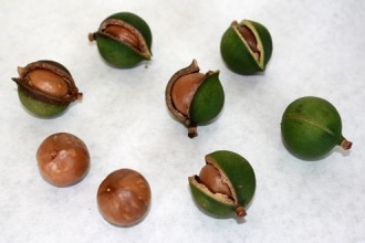
Today's column appears on June 18, 2016, and we found an interesting Hawaiian connection to this date, which lead to a rather tenuous checker connection. But first, a little background is in order.
You probably didn't know that the macadamia nut is named after Scotsman John Macadam, who was born in 1829, but if you've ever visited Hawai`i you'll be familiar with the flavor and texture of this iconic item.
The macadamia nut was first brought to Hawai`i in 1881 by William Herbert Purvis, but the reintroduction in 1892 is usually taken to be the beginning of commercial production. Brothers Edward Walter and Robert Alfred Jordan planted their trees on Wyllie Street in Nu`uanu Valley on, you guessed it, June 18 of that year. Upon reading the name "Robert Alfred Jordan" we immediately thought of the great checkerist Alfred Jordan, but of course that was another person altogether.
Still, we continued with that nutty line of thinking and tried to recall the "nuttiest" checker problems we've ever seen. In the end we decided on this one.
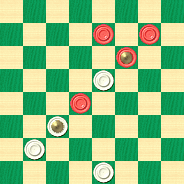
WHITE
White to Play and Win
W:W31,25,K22,15:B18,K11,8,7.
Why is this a "nutty" problem? Actually, it's a really good one, and White needs to find several "star" moves. It just struck us that the board position looks, well, nutty, and not something you're likely to see very often, if ever, in over the board play. Is the problem "nutty" or merely a "tough nut to crack"?
Don't go nuts; just work out the solution and then click on Read More to see the not so nutty solution.![]()
A Day in June

This column is due to appear on June 4, 2016. It seems that the month of June has inspired many lines of poetic thought. Perhaps none is as well known as that of James Russell Lowell:
“And what is so rare as a day in June? Then, if ever, come perfect days.”
(By the way, our photo above depicts a perfect June day in Waikiki.)
Or, consider this bit of humor from Bern Williams, with a grain of truth within:
“If a June night could talk, it would probably boast that it invented romance.”
And how about one of our favorites, a Dr. Seuss doggerel:
“How did it get so late so soon? It's night before it's afternoon. December is here before it's June. My goodness how the time has flewn. How did it get so late so soon?”
Indeed, how did it get late so soon? That's a perfect introduction to an easy speed problem, for which we're allowing you 10 seconds. Think fast! It gets late really, really soon.
June Speed Problem (Easy, 10 seconds)
When you're ready, click on the link above. Solve the problem and then come back here and click on Read More to verify your solution.![]()
The Speed of "May"

We thought that the shirt shown above made for a great speed problem image for the month of "May." Warning: Bad puns ahead.
This month's speed problem "may" require a little more thought than usual. We categorize it as being of "medium" difficulty, though "may"be you'll find it easier or harder.
May Speed Problem (Medium, 30 seconds)
Whenever you "may" be ready, click on the link above to display the problem and start the clock. Then come back here, after which you "may" click on Read More to check your solution.![]()
Josh and Lloyd Compose

Josh and Lloyd Gordon of Toronto have been contributors to The Checker Maven for some while, frequently sending us interesting position from their games and studies. Lately, they've been trying their hand, not at music composition, but at problem composition.
Now, while perhaps they're not yet ready to enter Bill Salot's excellent high-level competitions (see here[1]), they did send along an effort that we found quite interesting. It isn't terribly hard but it's a lot of fun.
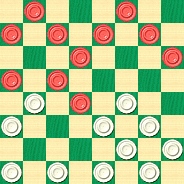
WHITE
White to Play and Draw
W:W32,31,30,29,28,27,24,23,21,19,17:B18,14,13,12,10,8,7,6,5,3,1.
Are you composed enough to find the solution? Composing a mouse click on Read More will allow you to annotate your opus with the correct solution.
[1] Bill Salot runs frequent thematic composition contests at the link given above. The problems found there are of the highest quality and are richly deserving of your attention.
![]()
A Taxing Situation
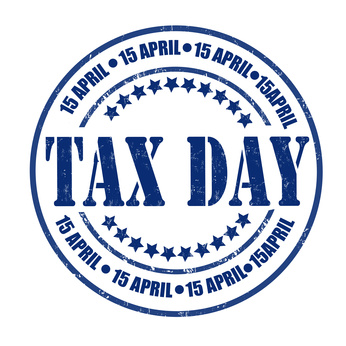
Yes, it's that time of year in the United States, tax day. Income taxes are generally due on April 15, though there's a bit of a reprieve in 2016 due to various holidays. Still, this is the final weekend for getting those taxes done and, if you're unlucky, writing a check to Uncle Sam, and you won't get so much as a "thank you" in return.
We invite you to take a checker break from your tax accounting, with a problem that is mentally rather than financially taxing. It will take solid visualization powers to solve this one, but at least it won't cost you anything.
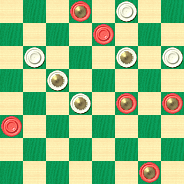
BLACK
Black to Play and Win
B:W30,24,K22,21,K19,K15:BK31,26,K14,K13,12,K1.
Tax your brain and see if you can solve it without moving the pieces. Then tax your wrist, just a little, by clicking your mouse on Read More. You won't get a refund but you will get to see a solution that is guaranteed to be more interesting than adding up deductions.![]()
The Time Machine
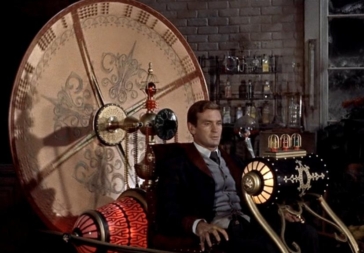
Do you remember The Time Machine by H.G. Wells? There were movie adaptations but the novel remains an unmatched classic of the genre. But at The Checker Maven we have a time machine of our own; it lies in our modest collection of old checker books and magazines.
Today, let's go back in time 91 years, to March of 1925, and take a look at a checker problem published then, and attributed to problemist W.J. Wood. (By the way, it was Rex Wood, not W.J. Wood, who edited the famed magazine Wood's Checkerist.) Like many a problem published in that day, the purpose was to instruct as much as to provide clever entertainment.
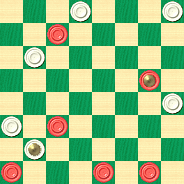
WHITE
Black to Play and Win
B:W31,29,24,13,12,K8:B27,K17,11,4,2,1.
There is a bit of flash in this one, but by and large, it's solved with old-fashioned over the board playing skill. Can you go back in time and show your chops? Time's passing; find the solution and then clock your mouse on Read More to see the solution.![]()
Josh's Clever Draw

We're trying something a little different today; it's a "speed" problem with a much longer timing than usual, because the solution, while short and clever, may not be immediately obvious. We owe this one to regular contributor Josh Gordon of Toronto (that's definitely not Josh in the photo above).
We'll give you a full minute to solve it. Of course, master players won't need anything like that long, but ... well, we won't give it away. Click on the link below to display the problem and start the clock, then come back and click on Read More to see the solution.
March 2016 Timed Problem (medium difficulty)
![]()
A Shocker

No, we're not presenting a public service safety announcement this week, although the lesson above is obvious. Instead, we're presenting a "shocker" of the checkerboard kind.
Problems with "dual" solutions, that is, more than one way to solve them, are in general not considered aesthetically pleasing, and are usually disqualified in problem composition contests. But in actual play, a selection of feasible lines of play is a frequent occurrence.
In the problem below, Black's best move is indeed a shocker, and we're certain the composer intended that to be the sole solution. But there is a shocker in here for the problem composer as well, in the form of an unanticipated and rather mundane alternate solution.
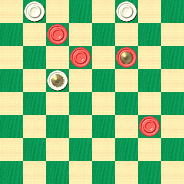
BLACK
Black to Play and Win
B:W32,30,K19:B27,23,K22,9.
Give yourself full credit for finding either solution, and an A+ for finding both. When you've solved it, zap your mouse on Read More to get a charge out of the full solution.![]()
The Checker Maven is produced at editorial offices in Honolulu, Hawai`i, as a completely non-commercial public service from which no income is obtained or sought. Original material is Copyright © 2004-2026 Avi Gobbler Publishing. Other material is public domain, AI generated, as attributed, or licensed under CC1, CC2, CC3 or CC4. Information presented on this site is offered as-is, at no cost, and bears no express or implied warranty as to accuracy or usability. You agree that you use such information entirely at your own risk. No liabilities of any kind under any legal theory whatsoever are accepted. The Checker Maven is dedicated to the memory of Mr. Bob Newell, Sr.

